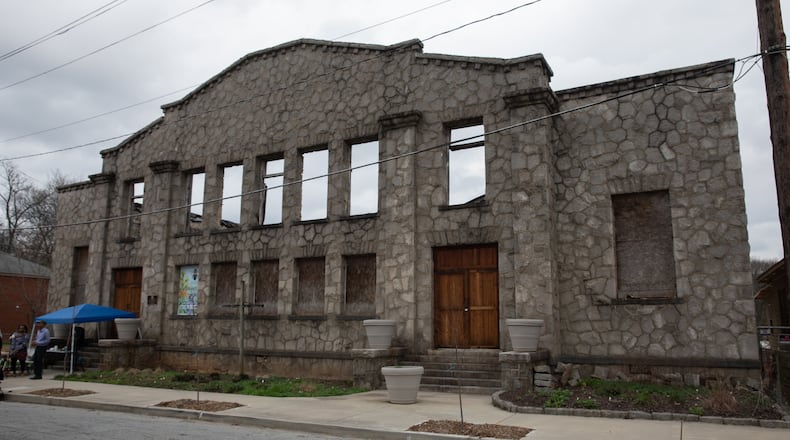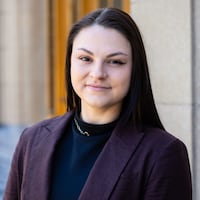Community organizers and local officials celebrated the official landmark dedication of a historic Black church in the English Avenue neighborhood on Thursday.
The old St. Mark AME Church, which has sat vacant since 1976, was granted historic landmark status by Atlanta’s Urban Design Commission in 2022. This means it cannot undergo any alterations or construction without first being approved by the city.
The building is unique for many reasons: It’s one of the only stone buildings of its kind in the city and, even more rare, is built out of Stone Mountain granite. After more than 100 years, only the four outside walls remain standing.
Built in 1920 for the Western Heights Baptist Church, it originally served an all-white, working class congregation. The church was sold in 1948 to St. Mark AME where it became the heart of the growing Black neighborhood.
For Atlanta City Councilman Michael Julian Bond, who represented the neighborhood in District 3 from 1991 to 2004, the church is the “cornerstone of the community.”
“When I was the district member, I demolished a lot of buildings over here — a lot of houses that had fallen into disrepair,” he said. “And if you’d look at it over the span of time, there’s a reason why a lot of what remains of this building is still here. This is really the bones of English Avenue.
“Even though the floors aren’t in there, the pews aren’t in there, the spirit is still there,” Bond said.
Current District 3 Councilman Byron Amos described the spot as “a place where history actually lives.”
Credit: Riley Bunch
Credit: Riley Bunch
The building has remained vacant since 1976 when St. Mark AME relocated. In the mid-1990s, Winston Taylor, a pastor and architect, bought the site and began to engage city and community partners to secure landmark status.
Taylor told the crowd gathered outside of the old church that the landmark designation was a product of their hard work.
“If we really want to look at how to rebuild community, it’s people building their community,” he said. “It’s not someone else coming in building your community, it’s you rising up to build your community and that’s what I am so proud of here today. All of us rose up to build this place.”
About the Author
The Latest
Featured


